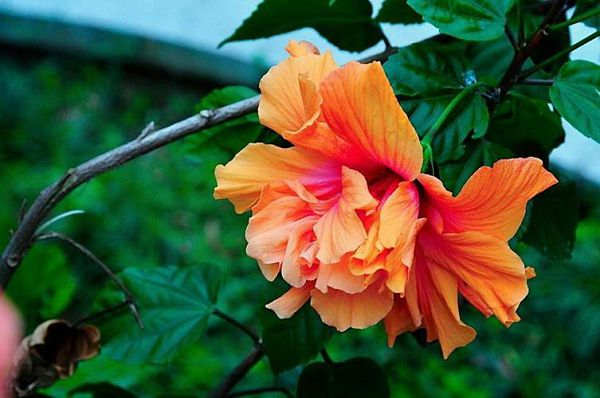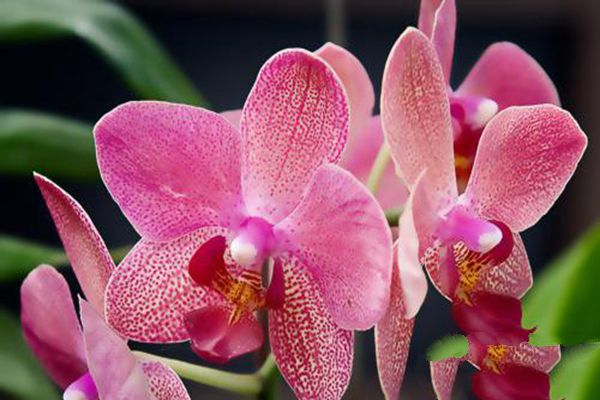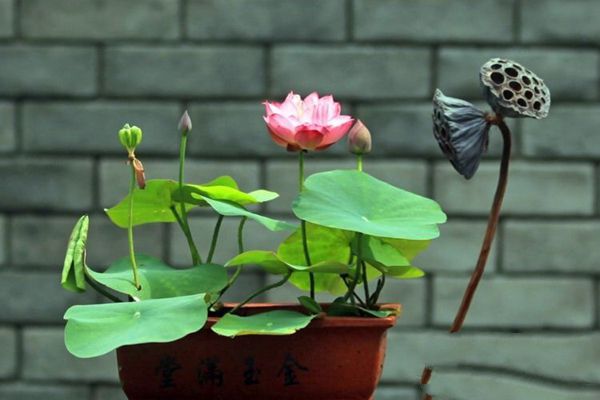Three main points of maintenance of flowers in autumn

After autumn, trees enter a peak period of growth, and the demand for water and fertilizer is relatively large, so reasonable fertilization should be carried out. Attention should be paid when applying fertilizer: first, it should be in the right amount. Fertilizing trees in autumn should be in line with the principle of less application, the amount of fertilizer should not be too large, too much fertilizer can easily lead to excessive growth of trees, or die because of fertilizer damage; second, the application of fertilizer should be symptomatic.
Autumn fertilizer should be mainly phosphorus and potassium fertilizer, careful application of nitrogen fertilizer, because the application of nitrogen fertilizer at this time, trees will grow too much, the degree of Lignification will be reduced, and it is easy to suffer frost injury or wind damage in winter. Phosphorus and potassium fertilizer can provide nutrients for tree growth in time, which is conducive to improve the degree of Lignification of trees, safe overwintering; third, timely. Fertilizer should be applied early in autumn and when fertilizer is most needed in the peak period of tree growth. Generally speaking, fertilization should be stopped before the first ten days of September. Too late fertilization can easily lead to overgrowth of trees.
In addition, at the end of autumn, farm manure can be applied in combination with frozen water, which can be applied shallowly or directly on the soil surface, which is beneficial for trees to survive the winter safely. As autumn is the peak of root growth, newly planted trees in spring can be combined with basal fertilizer and some phosphorus and potassium fertilizer to increase tree accumulation and cell sap concentration, so as to enhance the overwintering ability of trees. and lay a good foundation for growth and development in the coming year. In addition, the application of organic fertilizer can improve soil porosity, make soil loose, help soil snow cover and preserve soil moisture, prevent soil drought in winter and spring, increase soil temperature and reduce rhizosphere freezing damage.
The climate is dry in autumn, and trees have a great demand for water. In particular, the trees planted in those years should not be short of water. In early autumn, the temperature is still high and the transpiration of trees is large, so it should be properly watered to prevent the occurrence of autumn drought. After each watering, the soil should be loosened in time to preserve soil moisture. After late September, watering should be strictly controlled to prevent trees from falling in autumn, and it is appropriate for trees not to wilt. If the weather is too dry, a small amount of water can also be watered to maintain normal vital signs.
Pruning management
Many trees, especially some flower shrubs, differentiate flower buds in early autumn. if they can be pruned reasonably at this time, it is not only conducive to flower bud differentiation, but also improve the Lignification degree of new branches and help trees survive the winter safely. In early autumn, for flower shrubs that differentiate flower buds at this time, such as elm leaf plum and green peach, measures such as twisting shoots can be taken to control the vegetative growth of their branches and save nutrients for flower bud differentiation. The new branches of other trees can be properly coring, after the coring of the branches, stronger, higher degree of Lignification, cold resistance is also stronger.
Before the Mid-Autumn Festival, pruning hedge plants such as Euonymus tomentosa, Ligustrum lucidum, Berberis purpurea and other hedge plants is not only conducive to ornamental, but also control the vegetative growth, and its wounds can also be healed before winter, which is very good for the ornamental and growth of the hedge. In addition, some over-dense branches, side-by-side branches, weak branches, disease and insect branches can be pruned in autumn, which is conducive to the ventilation and light transmission of the plant crown and plays a positive role in the prevention and control of diseases and insect pests. For flowering shrubs such as crape myrtle, rose and hibiscus in autumn, the residual flowers should be cut off in time after each flower to prevent them from bearing fruit, so as not to consume too much nutrients and affect their growth.
Pest control
Autumn is a period of high incidence of diseases and insect pests. For diseases, timely prevention and control, but also to cure thoroughly, prevention and control rebound. At the end of autumn, the leaves in the green space should be cleaned up, which can effectively reduce the occurrence of diseases and insect pests in the coming year.
For some pests, such as American white moth and other leaf-eating pests, autumn is the peak of their harm, eating a large number of leaves and forming cocoons to survive the winter, so it is extremely important to do a good job in the prevention and control of diseases and insect pests in autumn, reduce the number of insect pests in the coming year, and ensure that the leaves of broad-leaved trees grow normally and winter buds form full. For the pests in the late growth or spawning period in autumn, it is necessary to kill the adults and nymphs while killing the eggs. For longicorn beetles and other dry borer pests, a variety of measures should be taken for integrated control.
Autumn storage
After the seedlings rise in autumn, if they cannot be planted in time, they should be stored to prevent them from losing water and drying out. The following points should be done as soon as possible:
1. It is best to use a ditch to bury with fine sand. The ditch is 50 cm deep and the length and width are determined according to the number of seedlings. After the trench is dug, put the roots of the bundles of seedlings down and top up into the bottom of the ditch. Don't be too tight between the bundles to prevent the roots from rotting. It is necessary to fill with coarse-sifted river sand and move the seedlings while filling the sand so that the sand is filled between bundles and seedlings.
2. Irrigate the top of the seedlings with rapid water, so that the sand can be washed into the bundles and seedlings as much as possible, once thoroughly, do not repeat, in order to prevent waterlogging injury and rotting roots. After watering, cover the seedlings with 10 cm thick river sand.
3. Cover grass to prevent cold according to local conditions. When the temperature rises in the following year, remove the cold grass in time to avoid sprouting and burning roots due to high temperature.
Related
- What if the leaves of potted flowers turn yellow?
- Florescence Control of several Flowers
- Anti-freezing technology and post-freezing nursing technology of flowers
- What is the classification of flowers? What are the common methods of flower classification?
- Prevention and control of alkali and acid damage of flowers in courtyard
- Technology of Anti-freezing and restoring growth of Flower seedlings in greenhouse and greenhouse
- How does flower fertilization not hurt the root? Fertilization technology of flowers
- Key points of disinfection in flower greenhouse
- Several pesticides that are banned or used cautiously in flowers
- How to fertilize the flowers that watch the leaves?



